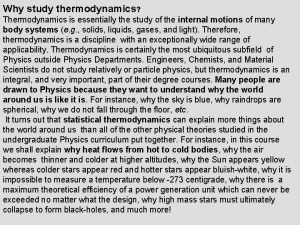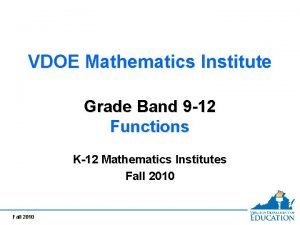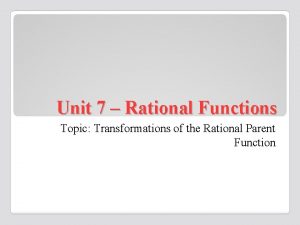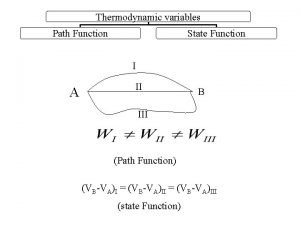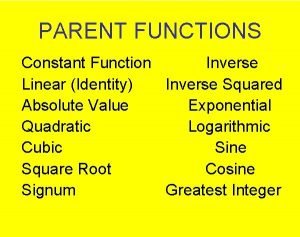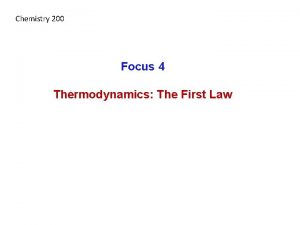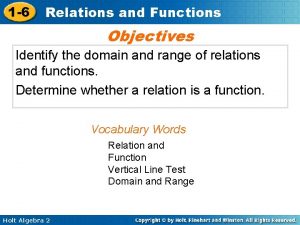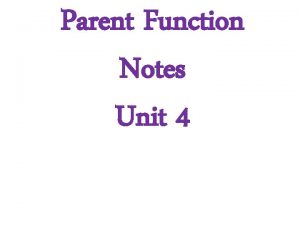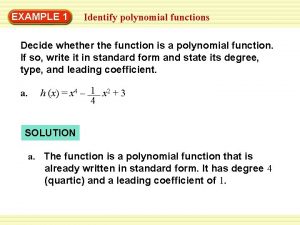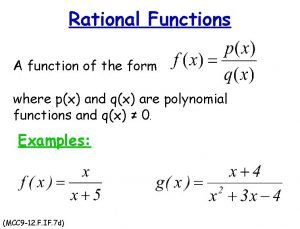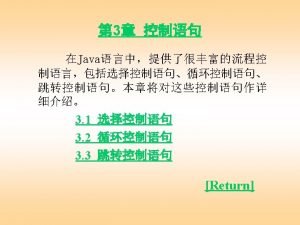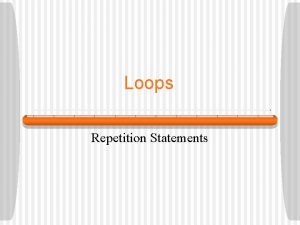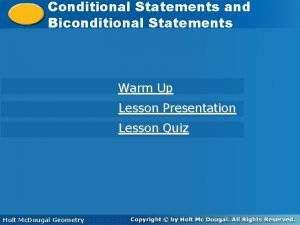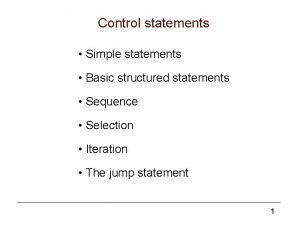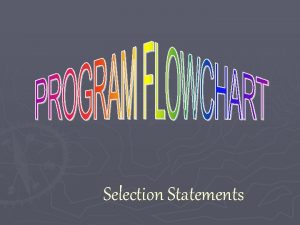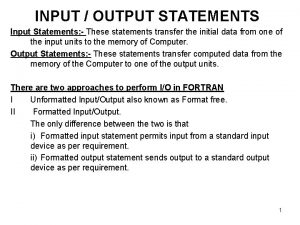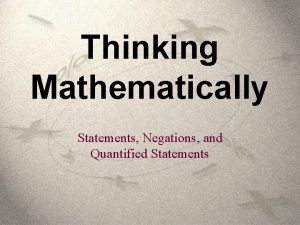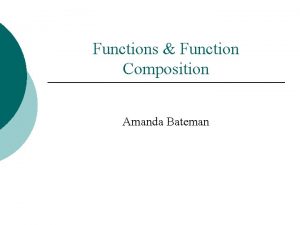5 2 def def function Nameparameters statements returnreturn


![5 -2 定義函式 我們可以使用def關鍵字定義函式,其語法如下: def function. Name([parameters]): statements [return|return value] [statements] 例如: def Cto. 5 -2 定義函式 我們可以使用def關鍵字定義函式,其語法如下: def function. Name([parameters]): statements [return|return value] [statements] 例如: def Cto.](https://slidetodoc.com/presentation_image_h/37940f17a45e24830fb22718d9529e0c/image-3.jpg)
![5 -3 呼叫函式 函式必須加以呼叫才會執行,其語法如下: function. Name([parameters]) 例如: def Cto. F 1(degree. C): degree. F 5 -3 呼叫函式 函式必須加以呼叫才會執行,其語法如下: function. Name([parameters]) 例如: def Cto. F 1(degree. C): degree. F](https://slidetodoc.com/presentation_image_h/37940f17a45e24830fb22718d9529e0c/image-4.jpg)










- Slides: 14


![5 2 定義函式 我們可以使用def關鍵字定義函式其語法如下 def function Nameparameters statements returnreturn value statements 例如 def Cto 5 -2 定義函式 我們可以使用def關鍵字定義函式,其語法如下: def function. Name([parameters]): statements [return|return value] [statements] 例如: def Cto.](https://slidetodoc.com/presentation_image_h/37940f17a45e24830fb22718d9529e0c/image-3.jpg)
5 -2 定義函式 我們可以使用def關鍵字定義函式,其語法如下: def function. Name([parameters]): statements [return|return value] [statements] 例如: def Cto. F 1(degree. C): degree. F = degree. C * 1. 8 + 32 print("攝氏", degree. C, "度可以轉換成華氏", degree. F, "度") 例如: def Cto. F 2(degree. C): degree. F = degree. C * 1. 8 + 32 return degree. F 一步到位 ! Python
![5 3 呼叫函式 函式必須加以呼叫才會執行其語法如下 function Nameparameters 例如 def Cto F 1degree C degree F 5 -3 呼叫函式 函式必須加以呼叫才會執行,其語法如下: function. Name([parameters]) 例如: def Cto. F 1(degree. C): degree. F](https://slidetodoc.com/presentation_image_h/37940f17a45e24830fb22718d9529e0c/image-4.jpg)
5 -3 呼叫函式 函式必須加以呼叫才會執行,其語法如下: function. Name([parameters]) 例如: def Cto. F 1(degree. C): degree. F = degree. C * 1. 8 + 32 print("攝氏", degree. C, "度可以轉換成華氏", degree. F, "度") temperature. C = eval(input("請輸入攝氏溫度:")) Cto. F 1(temperature. C) 一步到位 ! Python


5 -4 函式的參數(2/4) 5 -4 -2 關鍵字引數 Python預設採取位置引數 (position argument),但有些參數順序 實在不好記,此時可以使用關鍵字引數 (keyword argument) 來做 區分,也就是在呼叫函式時指定引數所對應的參數名稱,下面是 一個例子。 def trapezoid. Area(top, bottom, height): result = (top + bottom) * height / 2 print("這個梯形面積為", result) trapezoid. Area(10, 20, 5) trapezoid. Area(10, height = 5, bottom = 20) trapezoid. Area(height = 5, bottom = 20, top = 10) 一步到位 ! Python


5 -4 函式的參數(4/4) 5 -4 -4 任意引數串列 Python支援任意引數串列 (arbitrary argument list) 的功能,也就 是函式接受不限定個數的參數,下面是一個例子。 def add(*numbers): total = 0 for i in numbers: total = total + i return total print(add(1)) print(add(1, 2, 3)) print(add(1, 2, 3, 4, 5)) 一步到位 ! Python





5 -9 日期時間函式(1/2) 5 -9 -1 time模組有一些時間屬性和時間函式,常用的如下,在使用time模 組之前,必須使用import指令進行匯入: >>> import time • time. daylight • timezone • time. altzone • time() • time. clock() • time. gmtime([secs]) • time. ctime([secs]) • time. mktime(t) • time. sleep(secs) • time. strftime(format[, t]) • time. strptime(string[, format]) • time. localtime([secs]) • time. asctime([t]) 一步到位 ! Python

5 -9 日期時間函式(2/2) 5 -9 -2 calendar模組有一些日曆函式,常用的如下,在使用calendar模組 之前,必須使用import指令進行匯入: >>> import calendar • calendar. firstweekday() • calendar. setfirstweekday(weekday) • calendar. isleap(year) • calendar. weekday(year, month, day) • calendar. monthrange(year, month) • calendar(year) • calendar. month(year, month) 一步到位 ! Python
 The sequence of statements inside a function definition
The sequence of statements inside a function definition Piecewise function بالعربي
Piecewise function بالعربي Why study thermodynamics
Why study thermodynamics Rational functions parent function
Rational functions parent function Rational graph parent function
Rational graph parent function Pressure is state function or path function
Pressure is state function or path function Reciprocal parent function
Reciprocal parent function Nonlinear graph
Nonlinear graph Exponential parent function graph
Exponential parent function graph Pressure is state function or path function
Pressure is state function or path function Function vs not a function
Function vs not a function Linear parent function graph
Linear parent function graph Piecewise functions absolute value
Piecewise functions absolute value Decide whether the function is a polynomial function
Decide whether the function is a polynomial function A rational function is a function of the form
A rational function is a function of the form


